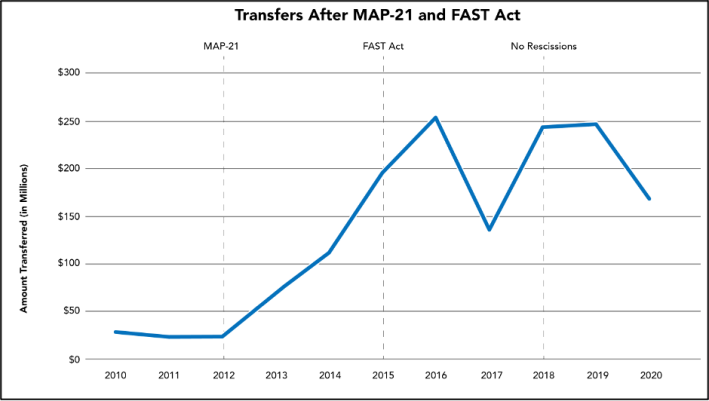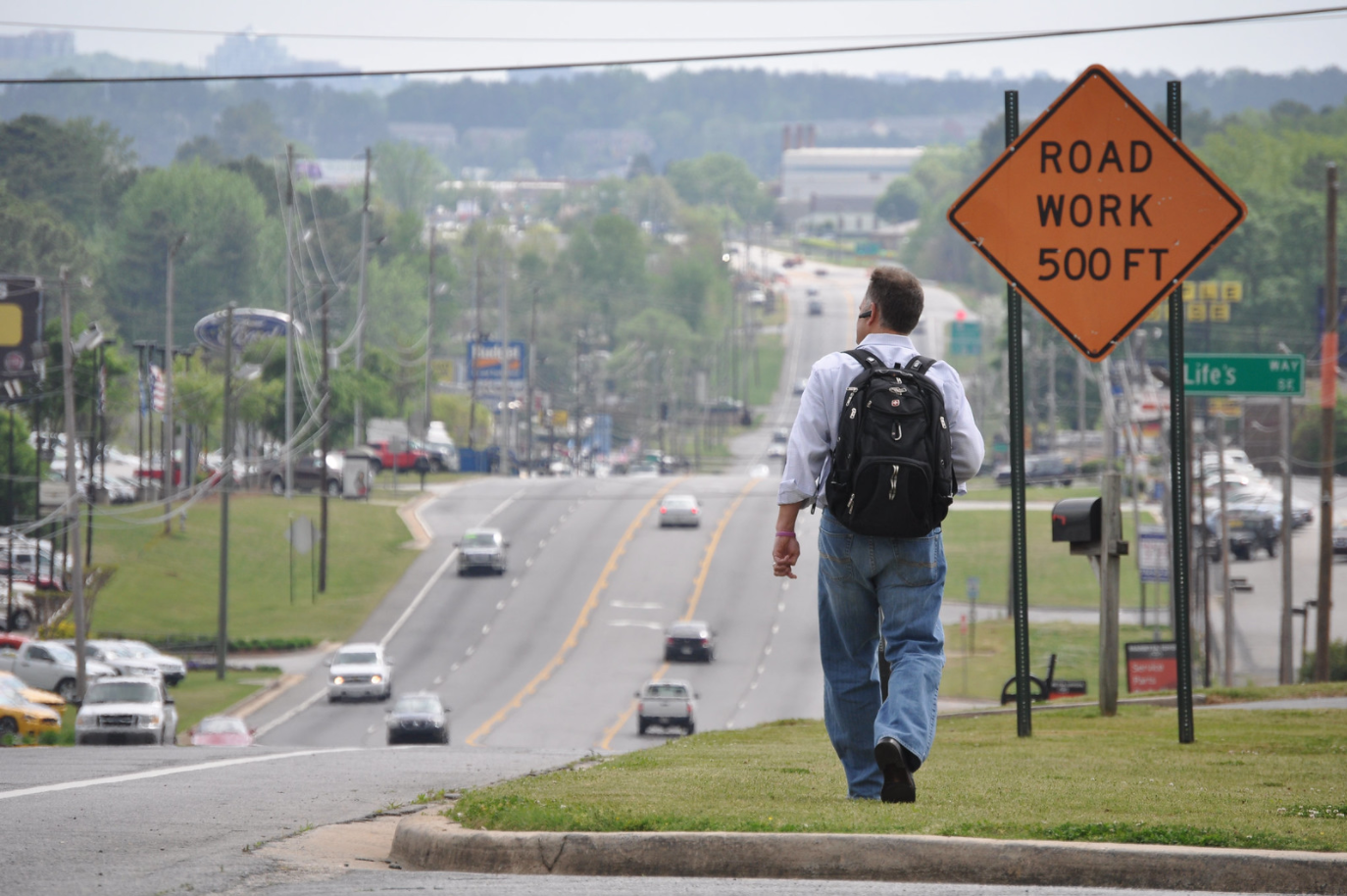A fifth of the largest pot of federal money that’s explicitly promised to active transportation users instead went to drivers last year — and advocates say it’s critical that we pass legislation that makes it harder for states to misuse the funds.
In its annual analysis of the Transportation Alternatives program, the Rails-to-Trails Conservancy found that $152 million of the $767 million that was apportioned for states and cities to improve walking and biking infrastructure had been reallocated to other programs. Theoretically, federal law allows communities to shuffle their sidewalk and bike path dollars to other agencies, in order to do things like ease the purchase parkland for multi-use trails. In practice, however, transportation leaders often simply give the money to programs that benefit automobile users, with no justification for how it will make streets safer for the most vulnerable.
“It’s sort of like how you have good and bad cholesterol; the good kind is inter-agency transfers,” said Kevin Mills, vice president of policy for the group. “But when you’re doing inter-program transfers that take money that was intended for a sidewalk and use it to build a road or a bridge, that’s a problem.”
Why the Transportation Alternatives bucket leaks so much

Under past surface transportation bills, states didn’t have as much latitude to “flex” Transportation Alternatives dollars to autocentric projects. But since the Moving Ahead for Progress in the 21st Century Act passed in 2012, they can shift as much as half the money from walkers and bikers. Despite a pandemic-related slowdown on infrastructure projects that dulled the effect of the policy last year, about six times as much money was still transferred in 2020 than at any point before the rule.
Rails-to-Trails say that massive loophole must be closed when Congress approves a new surface transportation re-authorization bill in September.
But advocates don’t just want to plug the holes in the leaky Transportation Alternatives bucket; they want to make the bucket bigger, too. Enter the Transportation Alternatives Enhancements Act, which would clamp down on iffy transfers while setting aside 10 percent of Surface Transportation Block Grants program specifically for active transportation, a move that would raise the program’s funding by about 75 percent each year.
Passing the bill along with President Biden’s infrastructure-stimulus bill — which would give the program a one-time, $5 billion injection — would unleash more federal active transportation funding than the country has ever seen. But if the stimulus passes without closing the loophole and creating a stable, annual funding source for active modes, half of the new cash might simply be “flexed” away, advocates worry.
Fixing the ‘flex’ is just the beginning
Expanding and securing funding for active transportation are critical to making car-free living viable for more Americans. But Mills says that it's only the first step if we really want to replace car trips with other modes.
“If we just keep funding [existing walking and rolling programs], we’re not going to be able to make the big leap forward to have people actually change their behavior,” said Mills. “We need to think bigger — and connectivity is the missing piece.”
Because most cities have such a dearth of bike and walking infrastructure, Transportation Alternatives projects tend to be disconnected from each other, which can bolster the myth that multi-use paths are recreational amenities rather than essential elements of car-free transportation networks.
“There’s lots to love in the American Jobs Plan, but they haven’t looked at this through the lens of, ‘how do you get from here to there if you’re on a bike or on your own feet?’” said Mills. “They say they want this to be about climate change and equity and jobs and safety, and we just don’t think we’re going to get there unless you think about this more comprehensively thorough the active transportation lens.”
That’s why the Conservancy says Congress must pass the Transportation Alternatives Enhancements Act as part of a package that includes two other bills: the Connecting America’s Active Transportation System Act, which would create a $500 million grant program to plug the gaps in city and regional walk/bike/roll networks, and the Recreational Trails Full Funding Act, which would triple federal dollars for off-road infrastructure.
The last bill might seem like an odd fit to some safe-streets advocates — at least those who emphasize protected infrastructure city streets. But Mills says it’s essential not just for gaining Republican support for the package (GOP lawmakers tend to look favorably on off-road trails), but also for making car-free life viable in many communities. Despite their association with sports cycling, many off-road paths serve as essential connectors in urban centers that expand access to opportunity for car-free workers, like the New York City segments of the Empire State Trail or the Ludlam Trail in downtown Miami.
“Every single trail in this country is used for both utilitarian trips and for recreation,” Mills said. “And by the way, every road is too. If I drive my car to a park, no one says, ‘you went for a recreational trip! That doesn’t count toward vehicle miles traveled.’”
Mills also argues that the off-road trail network is critical to our climate and equity outlook for another reason: because, for many Americans, it’s the only place that's comfortable to ride.
“Where do you take your kid to teach him how to ride a bike? You do it on the trail, not the multi-use arterial,” said Mills. “Heck, I ride my bike in the middle of the damn street, but I realize I’m an outlier, and we realize that our goal is to make this work for everybody. We don’t want to go back to the John Forester days; protected lanes are important, and multi-use trails are the gold standard for safety. You need both.”
The three bills Rails-to-Trails is championing may be a challenge to pass. But if Congress can secure more money for infrastructure, keep drivers’ hands off it, and make sure it’s deployed thoughtfully, many more people may be walking and rolling in the coming years.






